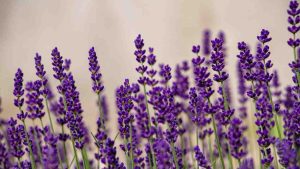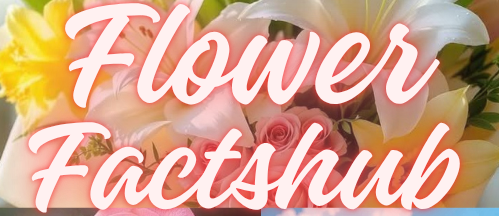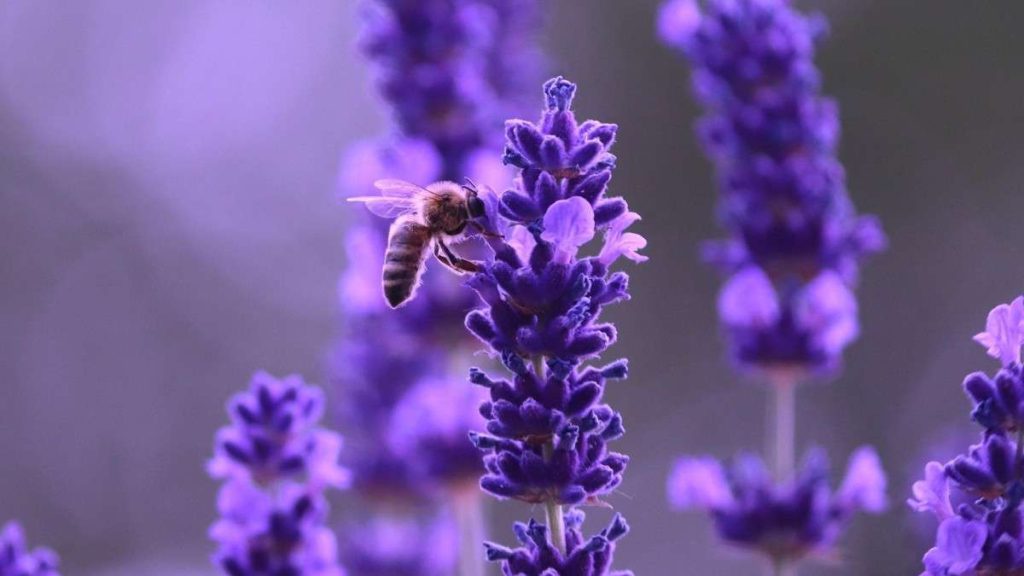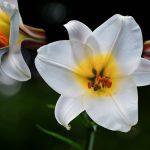The name “lavender” is derived from the Latin word lavare, which means “to wash” a nod to how it was used by Roman people in their baths for cleansing, healing, and soothing the mind. This herb belongs to the Lamiaceae or mint family, and has been used for millennia in many cultures, including tropical and Mediterranean regions, from northern Africa to southeast India. I first discovered its magic while traveling through south Europe, where locals still bathe with lavender flowers, or place dried buds in linen drawers to keep their clothes fragrant. The way this Lavender flower quietly spreads its scent through the air, imparting an immediate sense of balance, reminds me of how powerful nature’s therapy can be.
Lavender is commonly referred to as a natural remedy for stress, anxiety, and even depression, thanks to its aroma and therapeutic properties. It is grown for its essential oil, extracted through the distillation of flower spikes, and is used in everything from aromatherapy and skincare, to teas, baked goods, and herbal remedies. Many people believe it offers anti-bacterial, medicinal, and cosmetic benefits, though the Food and Drug Administration (FDA) does not regulate the purity or quality of these products. So it’s important to talk to a healthcare professional and test a small patch before using a new brand of lavender oil. Still, its beautiful, purple buds and floral essence continue to be valued across cultures for relieving fatigue, enhancing sleep, and creating a peaceful connection formal in personal care. From bushes in mountainous regions to your own linen closet, this humble lavender flower offers a timeless association with tranquility and wellness no wonder it’s still used the way it was centuries ago.
Why is lavender considered one of the most calming flowers in the world?
Lavender is considered one of the most calming flowers due to its natural compounds, like linalool, which help reduce stress, anxiety, and promote relaxation. Its soothing fragrance directly affects the nervous system, making it a go-to remedy for restful sleep, mental clarity, and emotional balance.
The History & Origin of Lavender
Lavender’s journey begins deep in ancient history, where its story is as rich and soothing as its scent. The word “lavender” itself comes from the Latin term “lavare,” meaning “to wash.” This name reveals how it was used by Roman civilizations in their daily baths, where the flower wasn’t just about cleanliness it symbolized spiritual cleansing, healing, and tranquility. Imagine stepping into warm water infused with this delicate herb, letting its fragrant essence rise with the steam. The Romans weren’t alone in this: Greeks, Persians, and Egyptians also revered lavender Flower for both its therapeutic and cosmetic properties.
Belonging to the Lamiaceae or mint family, lavender Flower is native to the Mediterranean, northern Africa, and southeast India, flourishing in mountainous regions and tropical climates. I first encountered wild lavender bushes during a hike in southern France the sight of their purple lavender flowers bobbing gently in the breeze, their scent absorbed by the warm air, left a mark on me. Even now, that memory is a mental retreat I visit when I need to reset.
Over the millennia, this versatile herb has spread through continents and cultures. It has been used in rituals, remedies, and even as a way to keep insects away by stuffing linen with dried buds. Some species were even considered sacred. From bath rituals in ancient Rome to modern aromatherapy treatments, the association of lavender with calm, beauty, and wellness has only grown stronger. And as researchers today continue studying its potential from stress relief to even cancer prevention the flower once used only by healers and royalty now finds a place in our homes, bodies, and souls.

Scientific Studies on Lavender
Modern research has finally caught up with what ancient cultures have known for century’s lavender Flower isn’t just beautiful; it’s a natural remedy with real health benefits. Multiple scientific studies have confirmed that lavender oil, especially when used in aromatherapy, can help relieve stress, reduce anxiety, and promote better sleep. It’s fascinating how a simple flower native to Mediterranean and tropical regions like Africa and southeast India holds such therapeutic properties. One 2013 study published in the journal Evidence-Based Complementary and Alternative Medicine showed that lavender essential oil had a significant calming effect on the nervous system, reducing heart rate and improving mood.
What gives lavender this power? Its aroma contains natural compounds like linalool and linalyl acetate, which are anti-bacterial and anti-inflammatory. These interact with receptors in the brain, influencing emotions, lowering fatigue, and even easing depression symptoms. I’ve personally found that just a few drops of lavender oil on my linen pillowcase at night help me fall asleep faster and wake up feeling more refreshed.
Organizations like the Food and Drug Administration (FDA) don’t officially regulate essential oils the way they do medications, so quality varies. That’s why it’s crucial to look for trusted brands, do a patch test before using, and consult a healthcare professional if you have concerns. But whether it’s used in teas, baths, and skincare, or aromatherapy, lavender’s calming effect is now scientifically backed, and its healing reputation continues to spread.
Growing and Caring for Lavender
There’s something almost magical about lavender Flower the way its silvery-green foliage sways in the breeze, the soothing hum of bees hovering over its purple spikes, and that unmistakable aroma that lingers in the air. But to truly harness its calming power, you need to start with the basics: growing it right.
Choosing the Right Lavender for Your Space
Not all lavenders Flower are created equal. If you’re dreaming of a classic English cottage garden, Lavandula angustifolia (English lavender) is your best bet it’s hardy, fragrant, and perfect for oils. For warmer climates, Lavandula stoechas (French lavender) with its flamboyant petals thrives in heat. And if you want the best of both worlds, Lavandula x intermedia (a hybrid like ‘Grosso’) offers intense fragrance and robust growth.
Pro Tip: If you’re growing lavender indoors, stick with compact varieties like ‘Munstead’ or ‘Hidcote’ they’re forgiving and fit beautifully on sunny windowsills.
The Golden Rules of Planting Lavender
Lavender is Mediterranean at heart, meaning it abhors wet feet. Here’s how to keep it happy:
- Sunlight: At least 6-8 hours of direct sun Less light = leggy, sad plants.
- Soil:Well-draining, slightly alkaline soil (pH 6.5-7.5). Mix sand or gravel into heavy clay soil.
- Spacing: Give each plant 2-3 feet of room lavender hates crowding.
I learned this the hard way when my first lavender patch drowned in a rainy season. Now, I always plant mine in raised beds or slopes to ensure drainage.
Watering: Less Is More
Overwatering is the fastest way to kill lavender. Established plants are drought-tolerant and prefer to dry out between watering’s.
- New plants: Water once or twice a week until roots settle.
- Mature plants: Only water during extended dry spells.
Trick: Stick your finger an inch into the soil if it’s dry, water lightly. If damp, wait.
Pruning for Longevity and Beauty
Lavender can get woody and sparse if neglected. Prune annually to keep it lush:
- Spring: Trim back 1/3 of new growth to encourage bushiness.
- After flowering: Cut off spent blooms to promote a second flush.
Warning: Never cut into old wood lavender struggles to regrow from bare stems.
Dealing with Pests (Or Lack Thereof)
One of lavender’s best perks? It’s naturally pest-resistant! Deer, rabbits, and most insects avoid it. However, watch for:
- Root rot (from soggy soil).
- Aphids (rare, but a blast of water or neem oil fixes it).
Harvesting Your Lavender for Maximum Calm
The best time to harvest? Early morning, when oils are most potent. Snip stems just as the buds begin to open, bundle them upside-down in a dark, dry place, and let the magic happen.
Personal Hack: I keep a small bundle by my bedside just brushing against it releases a whisper of serenity before sleep.
Final Thoughts
Lavender flowers are more than just a pretty bloom, they’re nature’s remedy for a calm mind and peaceful soul. With their signature soothing scent, gentle purple hue, and powerful calming properties, lavender has been cherished for centuries in aromatherapy, healing rituals, and home gardens. Whether used in essential oils, teas, or dried bouquets, this flower has a proven ability to ease anxiety, promote sleep, and uplift the spirit.
Bringing lavender into your life means embracing natural tranquility. Its calming effect isn’t just a myth, it’s a gentle, fragrant invitation to slow down, relax, and reconnect with your inner peace. From your senses to your soul, lavender truly knows how to heal.
Frequently Asked Questions (FAQs)
1. What does lavender smell like?
Lavender has a fresh, herbaceous, and slightly sweet floral aroma with subtle woody undertones. High-quality lavender (like Lavandula angustifolia) has a smoother scent, while some varieties (like Lavandula stoechas) have a sharper, camphor-like note.
2. Can I grow lavender indoors?
Yes, but it’s tricky! Lavender needs 6-8 hours of direct sunlight daily (a south-facing window is best) and excellent airflow. Use well-draining soil (cactus mix works) and avoid overwatering. Dwarf varieties like ‘Munstead’ or ‘Hidcote’ are best for pots.
3. How often should I water lavender?
Rarely! Lavender thrives on neglect. Water deeply but infrequently once every 2-3 weeks for mature plants (less in humid climates). Let the soil dry completely between waterings.
4. Why is my lavender plant dying?
Common reasons:
- Overwatering(yellow leaves, mushy stems).
- Poor drainage(lavender hates soggy roots).
- Lack of sunlight(spindly growth, fewer flowers).
- Pruning too hard into old wood(won’t regrow).
5. Does lavender really help with sleep and anxiety?
Yes! Studies show lavender’s linalool compound reduces cortisol (stress hormone) and promotes relaxation. Try:
- Diffusing lavender oil before bed.
- A sachet under your pillow.
- Lavender tea(using edible varieties like angustifolia).
6. Can I eat lavender?
Absolutely but only certain types! Culinary lavender (like Lavandula angustifolia) is safe. Avoid ornamental or pesticide-treated plants. Use sparingly it’s potent! Great in:
- Teas, honey, and baked goods.
- Herbal salts or infused syrups.
7. How do I dry lavender properly?
- Harvest when buds just begin to open.
- Bundle stems with rubber bands, hang upside-down in a dark, dry place (1–2 weeks).
- Store in airtight jars away from sunlight.
8. Does lavender repel mosquitoes?
Somewhat. Its scent deters mild insects, but it’s not as strong as DEET. For better results:
- Crush fresh leaves and rub on skin (patch test first).
- Mix lavender oil with citronella for a natural spray.
9. How long does lavender live?
With proper care, 5–10 years. Prevent woody decline by:
- Pruning yearly(never cut into bare stems).
- Replacing plants every few years for vigorous blooms.
10. Can I use lavender if I’m allergic to flowers?
Possibly, but patch-test first! Some people react to lavender pollen or oils. Try sniffing dried lavender before using oils or skincare products.



